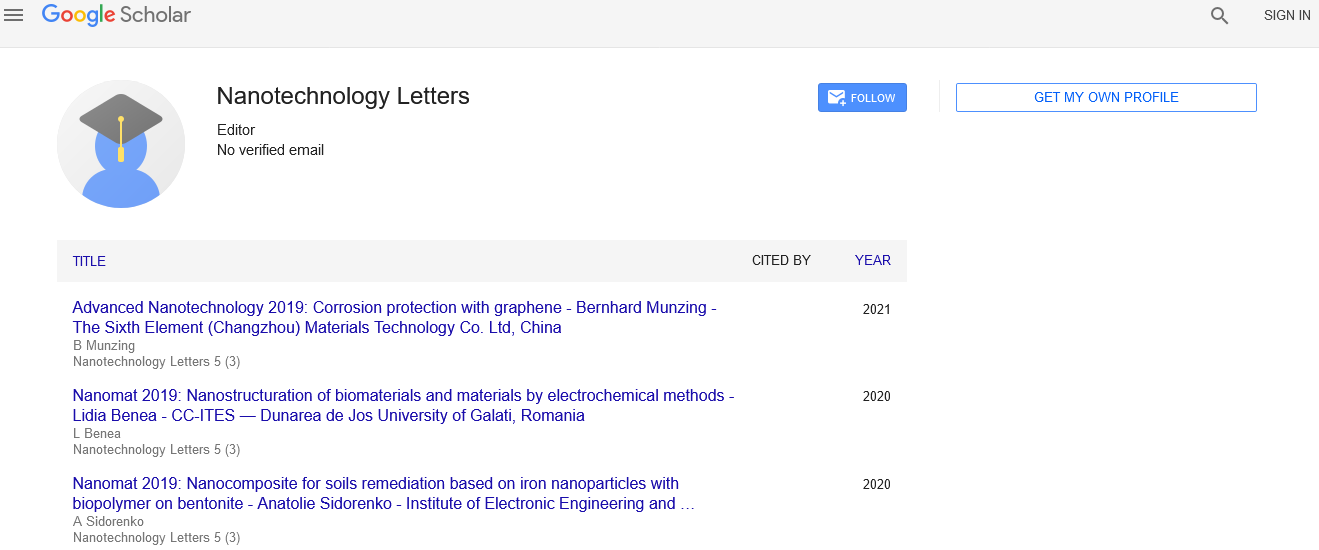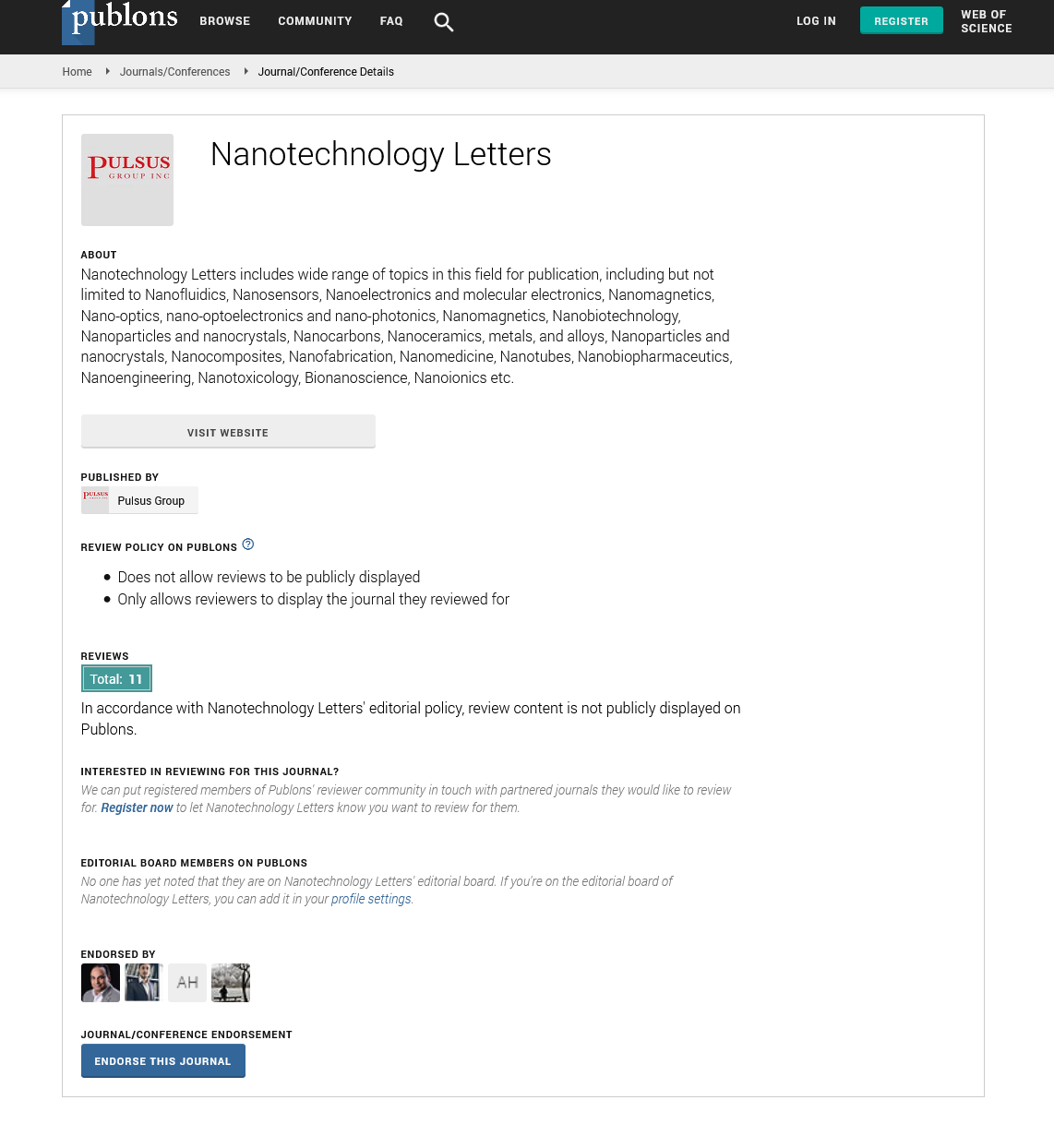Nano sensors
Received: 01-Sep-2021 Accepted Date: Sep 14, 2021; Published: 21-Sep-2021
Citation: Huang Z. Nano sensors. Nanotechnology Letters. 2021;6(1):5.
This open-access article is distributed under the terms of the Creative Commons Attribution Non-Commercial License (CC BY-NC) (http://creativecommons.org/licenses/by-nc/4.0/), which permits reuse, distribution and reproduction of the article, provided that the original work is properly cited and the reuse is restricted to noncommercial purposes. For commercial reuse, contact reprints@pulsus.com
Description
Nano sensors are sensing devices with at least one of their sensing dimensions being up to100 nm. In the field of nanotechnology, nano tech sensors are instrumental for detecting physical and chemical changes, monitoring biochemical and biomolecule changes in cells, and measuring toxic and polluting materials presented in the industry and environment. Nano sensors can be classified according to their energy source, structure and applications. The nanostructured materials used in manufacturing of Nano sensors are such as nanoscale wires carbon nanotubes, thin films, metal and metal oxides nanoparticles, polymer and biomaterials. Nano sensors are applied for monitoring physical and chemical phenomena in regions difficult to reach, detecting biochemical in cellular organelles, measuring nanoscopic particles in the industry and environment. Chemical detectors are used in applications for industrial, environmental, military, and aerospace. In industrial there are leak detection and food quality control and in environmental there are quality of air and water and in military there are anti-terrorism applications and finally in aerospace there are chemical analysis of soil and atmospheric constituents.
Nano sensors can be classified according to its energy source, structure and applications. According to energy source nano sensors are classified as active nano sensors and passive nano sensors. In active nano sensors energy source is needed like thermistors. In passive nano sensors where no energy source is required, like a thermocouple, and piezoelectric sensor. In classification based on structure there are four types of sensors optical nano sensors, electromagnetic nano sensors, and mechanical and/or vibrational nano sensors. Optical sensors are capable of monitoring qualitative analysis. They depend upon optical properties of nanomaterials and that they are often applied in several areas like the industry, biotechnology, medicine, environmental sciences, and human protection. Again in electromagnetic nano sensors there are two types of sensors monitoring via electrical current measurement. Monitoring via magnetism measurement. Mechanical nanosensors possess comparative advantages over optical nanosensors and electromagnetic nanosensors for the detection of nanoscale mechanical properties. There are many sorts of mechanical nanosensors like CNT-based fluidic shear-stress sensors and therefore the nano mechanical cantilever sensors. In classification supported application there are four sorts of sensors chemical sensors, deployable nanosensors, electrometers, biosensors. Chemical nanosensors can be applied to analyses a single chemical or molecule. Several different optical chemical nanosensors were used for measuring some properties like pH, and various ion concentrations. Deployable nanosensors utilized in military or other sorts of national security like Sniffer star and it's characterized by a light-weight , portable chemical detection system that mixes a nanomaterials for sample collection and a degree with a micro electromechanical detector. Electrometer consists of mechanical resonator, a detection electrode, and a gate electrode which are wont to couple charge to the mechanical element. Biosensors are one of the most commonly sensors used due to the possibilities of early cancer detection and detection of other various diseases.
Nanosensors are on the basis of receptors molecules, on the basis of receptors molecules there are affinity based nanosensors and catalytic based nanosensors. Many types of nanosensors has been reviewed, categorized and discussed according to energy source, structure, and materials. In general, optical nanosensors are very useful for chemicals monitoring inside a single cell. Electromagnetic nanosensors are applied for both chemical sensing as well as electromagnetic-mechatronic measurements. Meanwhile, mechanical nanosensors are used for determining the physio-mechanical properties and motion measurements.






